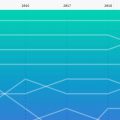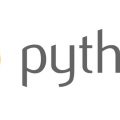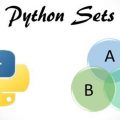Python’s popularity is skyrocketing. Tech giants such as Amazon, Facebook and Uber have used Python to develop and maintain both their desktop and mobile applications, and according to the 2019 Stack Overflow Developer Survey, Python is the second most loved programming language by software developers – the very people who are at the forefront of emerging tech.
In 2019, Python overtook Java as the second most commonly used programming language on Github (behind JavaScript) and is a favorite for the title of Programming Language of the Year for 2019 according to TIOBE – which would make it a repeat win after taking the title in 2018.
The growth of Python shows no sign of stopping anytime soon, and everything is pointing to a future where the main language used for development needs is none other than Python. Let’s find out why.
Gentle Learning Curve
One of the most common reviews of the Python programming language is that it is extremely easy to use “out of the box”. For those new to Python, the straightforward, English-like syntax and “batteries included” philosophy mean that it is easy to get your feet wet with the language. Python also handles many of the low-level, complex details of programming behind the scenes, making it possible to do a lot with a few lines of code.
However, the utility of Python isn’t limited to just beginners. For any program that you want to write, there is probably a Python library available to do most of the heavy lifting. As a result, it is used in a wide range of applications, from web development (Instagram) to special effects lighting (Lucasfilm) to natural language processing for smart assistants (Google Home).
Python Frameworks
Frameworks, which help developers deliver products faster by presenting them with a ready-made structure for application development and reducing the overall amount of code, are essentially a time-saving tool. Django, TurboGears and Pyramid, the three most popular Python frameworks, are set to go through some major changes as users will be releasing new libraries, plugins and framework updates that will allow programmers to reduce the amount of time it takes to develop web applications, increase data privacy protections and shorten the length of the development cycle.
Default for Data Science and AI
While Python is extremely wel-equipped for general programming, it also shines in a few specialist areas. The rapid rise of Python is largely attributed to its extensive use in data science, artificial intelligence, machine learning and more. A wide variety of packages and easy integration with TensorFlow make Python a favorite programming language among data scientists, allowing it to even out-compete specialist languages like R. And since the data analytics market is projected to go from $49 billion in 2019 to a whopping $103 billion in in 2027, and 58% of Python developers use the language for data analytics, it seems to be on a promising trajectory.
The Future of Python
Python is well-positioned to continue growth as one of the dominant programming languages of the future. It is well-known as an easy-to-learn language for general programming, frameworks are evolving, and it has become the de facto language of choice in research areas that are growing rapidly – all indications that more and more major companies will opt to embrace Python as they search for a programming language that can be used for the majority of their development needs.
Copyright © Python People








